Silicone sealant is one of the most popular means of sealing joints against the penetration of water and air currents. This is due to the simplicity of its use and low price. But at the time of use, they can stain the surface or work clothes. In addition, over time, the product loses color, collapses, peels off, becomes covered with a fungus. Two questions arise: how to remove the old sealant and how to remove the silicone product that accidentally stained the surface or clothes?

What it is?
A silicone sealant is a mixture of rubber, a reinforcing agent, an adhesion primer, a plasticizer, a vulcanizer, dyes, mechanical fillers and fungicides. This composition makes the tool plastic, sticky, antibacterial, able to solidify at room temperature. Dyes help merge with the color of the surface. It is this set of properties that has given wide application to sealant: it can be automotive, sanitary, aquarium, universal, etc.
But the matter is not only in the field of application, but also in the basis that was used in the manufacture of the composition. Stains can remain from acrylic, and from polyurethane, bitumen, thiokol and, in fact, silicone sealant. therefore It is important to remember what tool was used for the work. In addition, the silicone itself is acidic and neutral. When stains are removed, it matters, otherwise you may damage the surface or clothing.
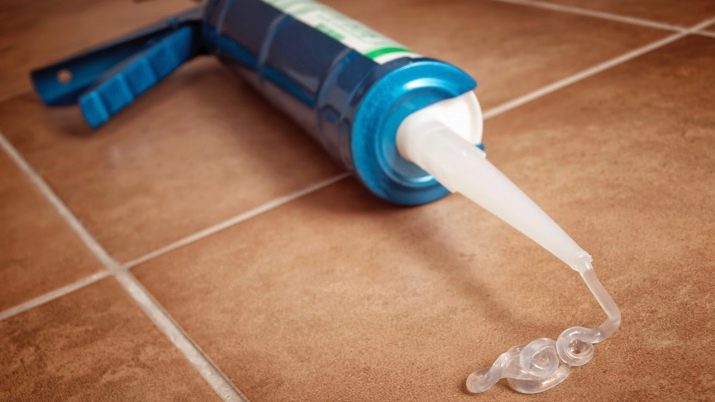
But now you can buy a combination sealant that incorporates the best qualities of all types. It consists of:
- silicone - 26%;
- rubber mastic - 4-6%;
- thiokol / polyurethane / acrylic mastic - 2-3%;
- epoxy resins - not more than 2%;
- cement mixtures - not more than 0.3%.
If you use this composition to remove stains, you may need several tools, and not one.
The freshness of the stain is of fundamental importance: to remove the excess, it is enough to quickly wipe the surface with a dry white cloth. To remove the frozen composition will have to use mechanical or chemical means. The same applies to the old dried sealant, which must be replaced.
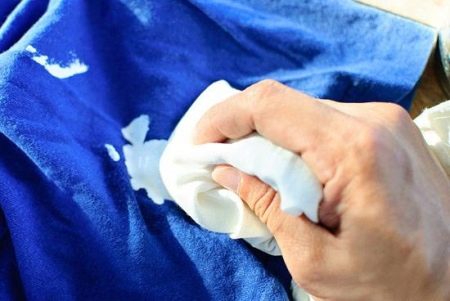
Necessary accessories and tools
The set of tools and accessories will depend on how the sealant is removed:
- scrubbing;
- softening (dissolution);
- laundering;
- cutting;
- scraping off.
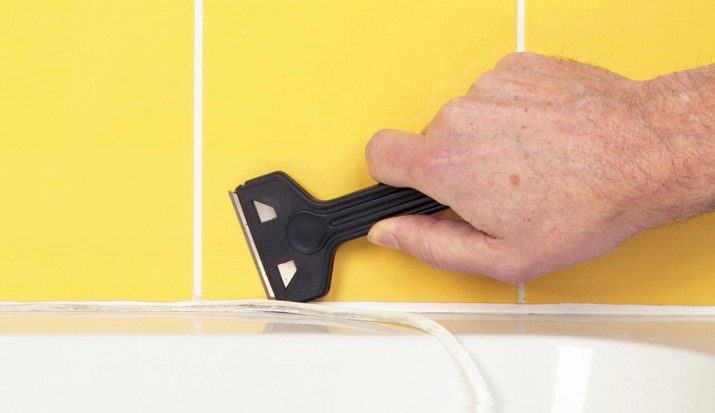
It is clear that the methods were divided into mechanical and chemical. For mechanical, you may need the following accessories:
- stationery or construction knife;
- scissors;
- screwdriver;
- metal spatula;
- sandpaper;
- scraper;
- powder abrasives (including salt) and compressed material such as pumice;
- bag made of polyethylene.
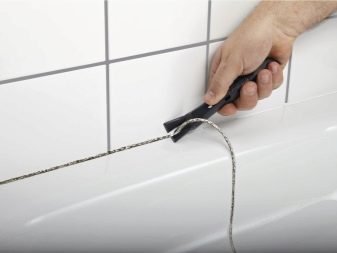
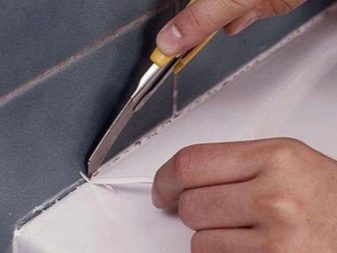
For chemical use a wide variety of food, pharmacy and industrial preparations:
- vinegar essence (70%);
- ethanol;
- Penta-840 solvent;
- Antisil solvent;
- White Spirit;
- petrol;
- a wash to remove the mounting foam;
- wipers;
- Dow Corning OS-2 and Dow Corning DS-2025;
- Logatto;
- CRC Gasket Remover;
- Quilosa.
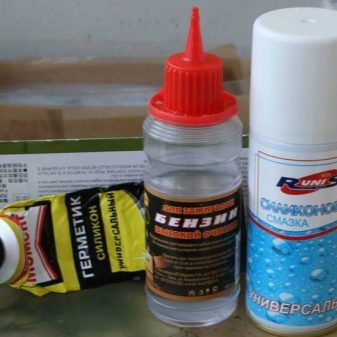

In any case, under your hands should always be cloth napkins or rags to match the sealant. Do not use a colored cloth to remove white or transparent sealant - the pigment will remain on the product. When using chemical compounds gloves must be worn. Some drugs have a pungent odor, so it is best to use a respirator or medical mask.
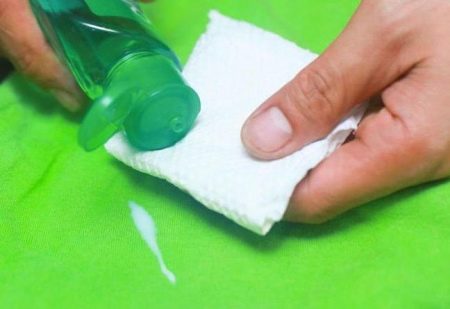
Preparatory work
If silicone is removed from a hard surface, you need to be sure that the means of removal will not damage it and will only affect the sealant. In case of risk of damage, it is better to glue or cover the surface with protective material. When using chemical compositions, the treated surface should be dried. You should not use several drugs at the same time.if it is not provided by the recipe. Compounding chemicals can be harmful to the surface.
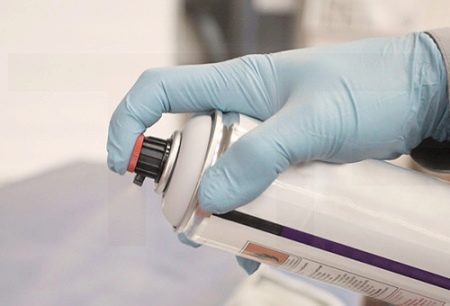
How can I remove it?
A transparent or colored sealant, after drying, becomes an elastic mass, firmly attached to the surface. This mass reacts poorly to mechanical or chemical effects. The sealant removal method will depend on the surface material.
In glass or plastic panels, the adhesion of the composition to the surface is the weakest, because they are the smoothest. When removing from countertops, use non-toxic agents so that it’s safe to use the table later. The surface of the bathtub, covered with acrylic paint, may lose it if the chemical product is incorrectly selected. Porous tiles or tiles will require more effort than a smooth surface. When using acid-containing compounds on a steel surface, it can oxidize and become rusty.
Thus, choosing a method, you need to focus on the surface material.
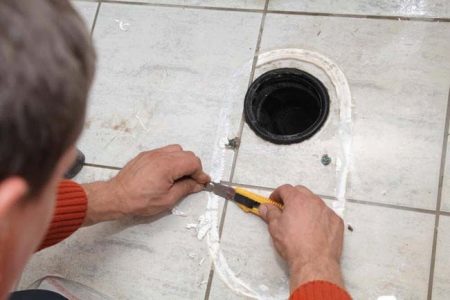
Mechanical
Despite all the warnings, some still work without gloves. As a result, the hands are smeared with sealant. The question inevitably arises of how to wash it. You can start with the simplest mechanical means:
- Hand rub thoroughly with a bag of polyethylene. Then it is washed with soap under warm water. The procedure is repeated several times.
- Salt semi-soluble in warm water is rubbed with pumice on the hands. The procedure will have to be repeated several times to achieve the effect.

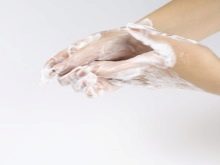
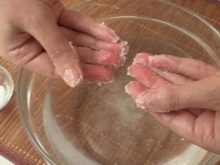
To remove the composition from the tile or tile, use stationery or construction knife. If you need to clean the joint between the bath and the wall, you can use a screwdriver.But if the sealant is not too old, then you can try to pry it anywhere: perhaps it has retained its adhesive properties and can easily be taken out of the recess with the entire strip. If there is no fear that the surface will be scratched, you can use a metal straight or angled spatula.
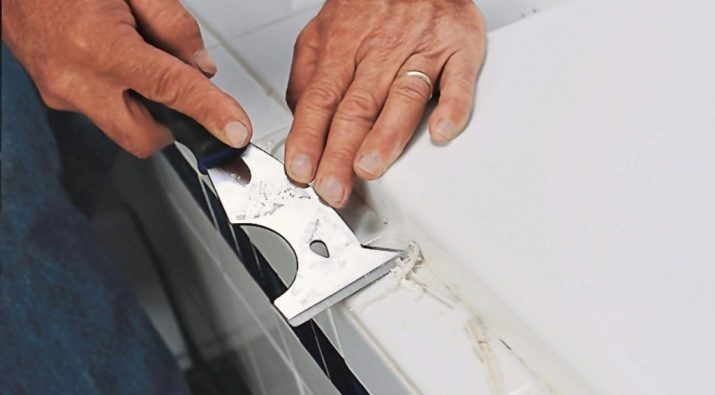
It is reasonable to use a mechanical method of removing the composition from a glass, plastic or MDF countertop, since the chemical components will not remain on the table. But there is a danger of scratching the surface. Therefore, you must use a thin sharp knife or blade. If this method does not help, then you can use kitchen abrasives mixed with water: salt, cleaning powder.
Emery paper is used if minor repairs are carried out. For example, before painting the bath, it is easier to remove the old sealant with a strong abrasive without fear of damaging the paint. Instead of sandpaper, you can use a kitchen scraper.
After removing the base layer by any mechanical method, the surface is wiped with a dry cloth. Matte spots will be visible on the surface. To get rid of them, moist table salt is poured in several layers of gauze, wrapped in the form of a tampon and wiped with a surface.
Before re-applying sealant, the surface must be cleaned and dried.
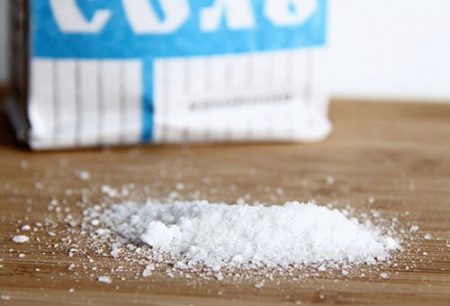
Chemical
It is not always possible to get by with the mechanical method of getting rid of the old composition. Sometimes, in order not to scratch the surface, it is easier to dissolve it. In other cases, the old sealant cannot be cut, and then it must first be softened using chemical compositions. At home, one-component solvents are used that differ in the type of vulcanizing substance into acidic and neutral. Acetic essence belongs to acidic. Neutral are amine, amide, oxide, alcohol.
You can clean the sealant from the skin with alcohol, white spirit, acetone, gasoline. After skin treatment, hands should be washed with warm water and soap. For use on inorganic surfaces, universal agents are used.: Antisil or Penta-80. If it is necessary to remove the aged sealant, it is treated with a solvent and left for several hours. Only then cut with a knife.
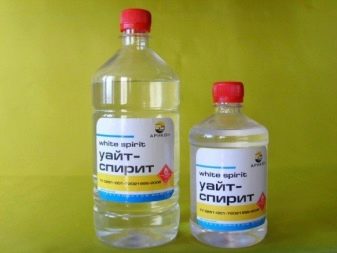
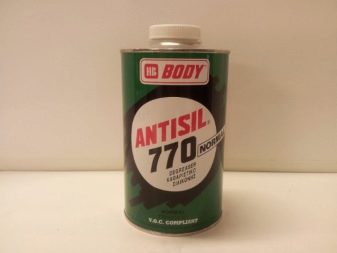
To remove adhesive from a plastic surface, including pipes, you can use Dow Corning OS-2. It is not capable of damaging plastic; it is also suitable for acrylic surfaces. That is why they can remove the seal from the acrylic bath. For this, Dow Corning OS-2 must be applied to the sealant and left to soften, then pry and remove from the seam. Wipe the surface to be cleaned with a dry, clean cloth and degrease.
When treating the surface with gasoline, it will take about an hour to soften, then wipe off the seal. To get rid of traces of gasoline, the surface is treated with a conventional dishwashing detergent or glass cleaner.
Foreign chemical drugDow Corning OS-2 and Dow Corning DS-2025, Logatto, CRC Gasket Remover, Quilosa stronger than domestic counterparts, moreover, they have a sparing composition. This is what they attract buyers.
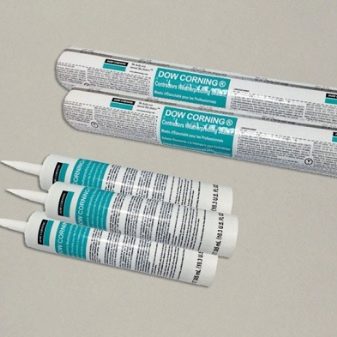

How to remove from clothes?
Any previously described method suggests that silicone sealant is not so easy to clean. Therefore, if he gets on his clothes, do not wait for drying: the faster the removal process begins, the easier it will be to do. There are several ways to do this:
- If the stain does not dry, the clothes must be pulled, then the sealant, which has turned into a thin film, should be picked up with a sharp knife and removed from the surface.
- Put the contaminated thing in a clean bag, which for several hours put in the freezer. Having taken out clothes, it is necessary to stretch in a place of gluing with sealant and to remove a silicone film.
- Apply a remover to remove the mounting foam on the stain and wait for it to dry. Use a fingernail or a sharp knife to pick up the wash with silicone and remove from the fabric. Wash clothes with washing powder.After applying this method, clothing is completely cleaned of sealant.
- Any solvent of the above should be applied to the stain, covered with a clean cloth and ironed with a hot iron. These actions can be repeated several times.
- Apply a little vegetable oil to the stain, leave for a few minutes. Under the influence of oil, silicone will begin to dissolve. Use a tissue swab to remove curled sealant. The stain should be cleaned with a detergent and a brush. Only after that wash the thing completely.
- If the sealant is old on clothes, then the stain should be soaked in vinegar essence for 30 minutes, then wiped with a normal cloth.
- Dampen the stain with vodka, medical or technical alcohol and rub it with a hard bristle brush. Instead of a brush, you can use pumice. Silicone rolls into spools and is removed from the thing.
- Apply a dichlorvos type repellent to the stain. After some time, the solvent included in the repellent will soften the silicone and it can be removed.
When using any method, it is imperative to use personal protective equipment for face and hands. In addition, such work is best done in a ventilated area. Colored clothing is best cleaned mechanically.
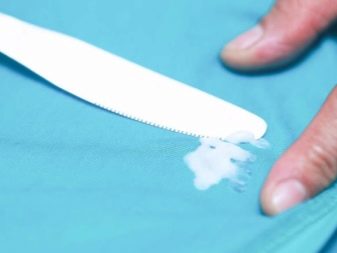
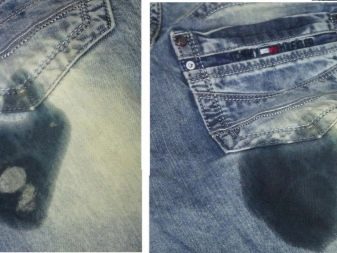
The final stage
Removing old sealant is usually done for the purpose of replacement. After that, the surface is washed, dried and degreased. For further use, you need to choose the right type of silicone composition:
- Acid silicone is not suitable for use on metal surfaces. But it has excellent adhesion with glass, ceramic tiles and plastic, wood and wood-based materials. Neutral silicone is not an oxidizing agent, therefore it has a wider scope. But the price is higher.
- The sealant is produced in tubes or cartridges for which you need to buy a construction gun. It is many times more economical to use a spray can with a gun. But if you need to process a small surface, then it is quite possible to do with a tube.
- The applied layer should not protrude from the seam, this will reduce adhesion. If the slots are too large, they are first sealed with other seals, and only at the final stage is the sealant applied.
If necessary, adjust the seam to smooth it with a piece of cloth or a rubber glove. Excess silicone must be removed from the surface as soon as possible.
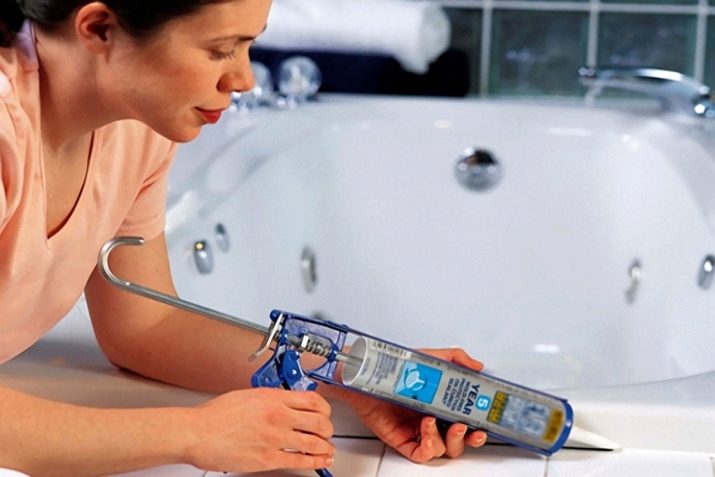
Recommendations
When storing silicone sealant in its original packaging at a temperature of 0-20 degrees, it is suitable for use for 12 months. During operation, the ambient temperature can be from +5 to +40 degrees. But when used in heat, the solidification time is doubled.
Before using this seal, you need to be clearly aware of the final work: paint does not lie on the silicone sealant, which means it will be impossible to paint over. If such a procedure was supposed, then it is better to buy another type of sealant and try to paint it first.
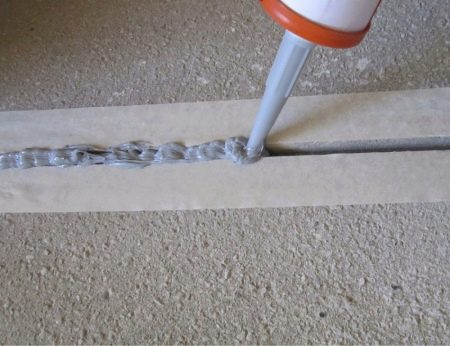
See how to properly remove stains from sealant in the next video.










